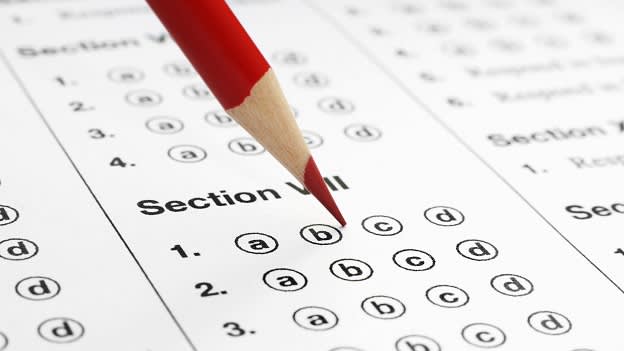It’s time MBA exams look beyond quantitative approach

Akash has been known as a great man-manager ever since his school and college days. He excelled in debates, quiz, managing school & college social events. His only weakness has been mathematics. He was just mediocre when it came to solving quantitative problems. And this became a major source of stress when he tried to take the MBA entrance exams. He realised his weakness might cost him dearly if he didn’t brush up his number skills. For the first time, he felt inadequate.
Clearly, major MBA entrance exams give weightage to quantitative solutions than qualitative. No wonder, engineers or science-major students have the highest success rate compared to students who appear from pure Arts or Commerce background.
Let’s take a look at the format of the major MBA entrance exams – mainly GMAT, GRE, CAT, XAT.
GMAT: This test comprises separate sections – Analytical Writing Assessment (AWS), Integrated Reasoning (IR), Quantitative (Quants) and Verbal. The total time provided for the test is 3.5 hours, out of which 30 minutes are given for AWS, 30 minutes again for IR, 75 minutes for Quants and 75 minutes are provided for Verbal.
In AWS, there is a writing task given, usually an analysis of an argument. IR is relatively a new section (started in June, 2012) consists of 12 questions which include four types of questions – graphic-interpretation, multi-source-reasoning, two-part-analysis and table-analysis. Quants test the ability of the student in Maths and aptitude. In Verbal, the student is judged on the basis of comprehension ability, writing skill and reasoning on the written material.
GRE: GRE consists six sections. The first section is about analytical reasoning. Out of the remaining five, the first two sections are on Verbal Reasoning, other two are on Quantitative Reasoning and the last section is either a research or an experimental section. The last five sections can be given in any order. The duration of the test if 3 hours 45 minutes with 1 minute break after each section and 10 minute break after third section.
CAT: It is a computer based test taken all over India and in 2014 the duration of the test was changed to 2 hours 50 mins from 2 hours 20 mins. And the numbers of questions have been increased from 60 to 100. CAT has multiple choice questions in specifically two broad sections – Quantitative Ability & Data Interpretation and Verbal Ability & Logical Reasoning. Each section should be given equal importance to score well in CAT. For every right answer 3 marks is provided and for every wrong answer ¼ th mark will be deducted from the score.
XAT: XAT has four sections in the test - Verbal Ability & Logical Reasoning (VA), Quantitative Ability & Data Interpretation (QA), Analytical Reasoning & Decision Making Ability (AR) and General Awareness & Essay Writing. Since 2013, it has become a 3 hours long exam where 2 hours and 20 minutes are given for first three sections and last 40 minutes are provided for General Awareness & Essay Writing.
In all the above formats, quantitative ability has a lot of importance. Chanda Kochhar MD & CEO, ICICI Bank explains it very well. “Managerial jobs require holistic skills and not just quantitative skills. It is in this context that I said that an MBA selection process should ensure a balance between quantitative, conceptual and social skills. And ‘quantitative skills’ have no relationship with gender and both men and women are equally adept at it,” said Kochhar.
When you look at the job profile of a manager, it is prerogative that these managers have the people-connect skills. Some have it naturally in them and others work better under guidance. It is essential for management courses to emphasise other factors and not just quantitative. And we are in the threshold of a great economic mishmash where new business methods are giving a tough time to the already established rules of businesses. To evolve and restructure are the two pillars of successful businesses. And for this, students need to-the-point exams where their capability in which they want to excel/major should outshine other aspects.
While a few courses like Finance and IT cannot do without students who have good grip on quantitative methods, but courses like PM&IR, OB, HR, Marketing can do without emphasising too much on Math.
However, quantitative ability is not something you can do without. It is required, but the percentage can vary according to the courses one decides to choose. Structural changes in the format of the MBA entrance exams are the need of an hour.












